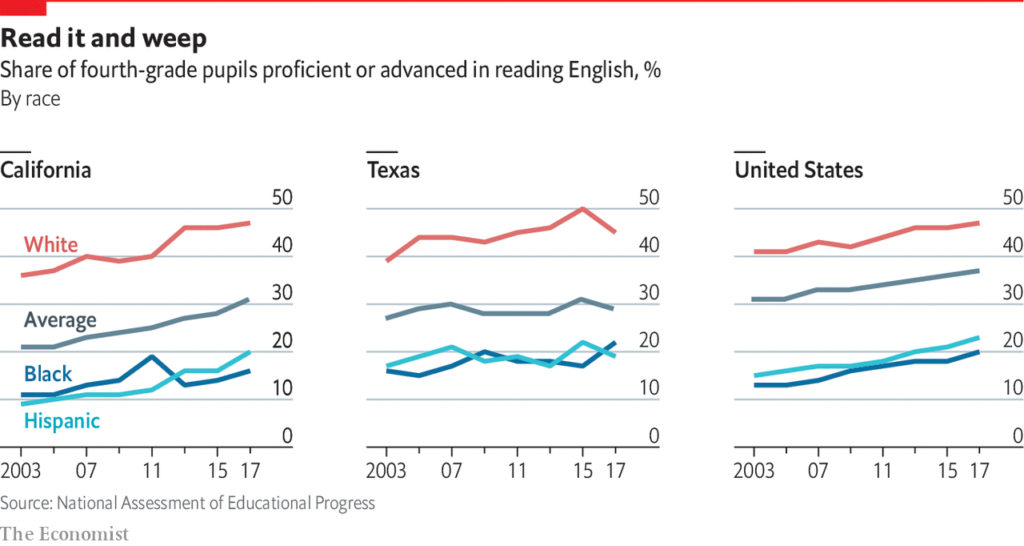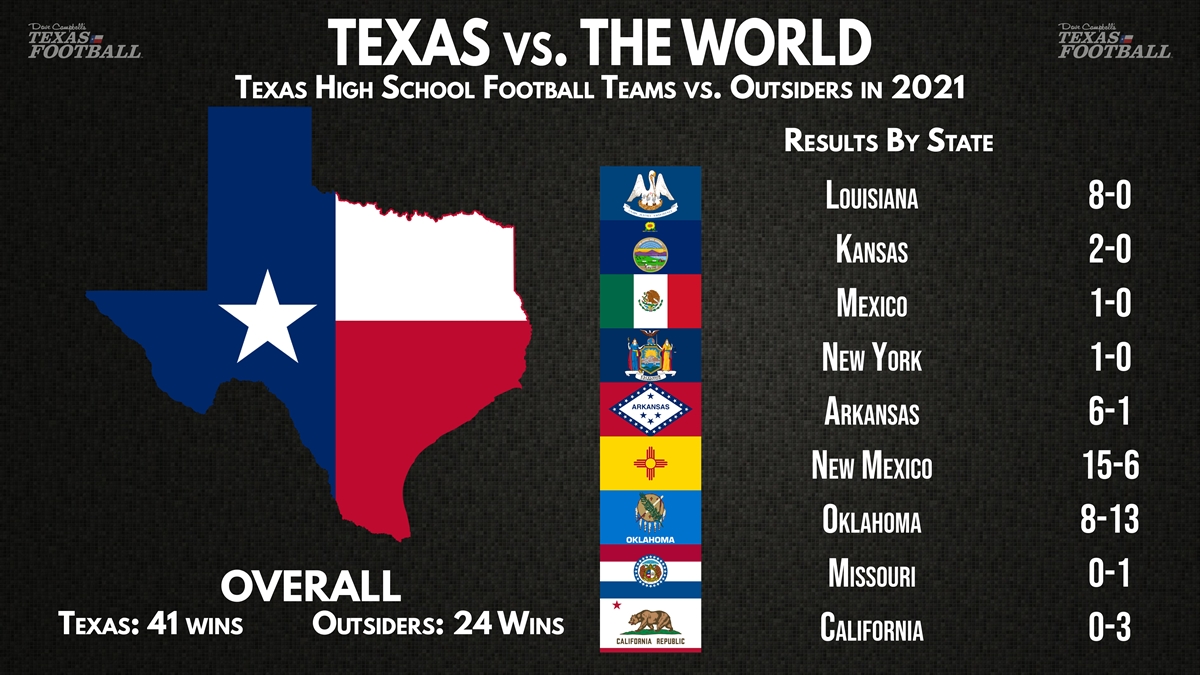When it comes to comparing the education systems of two large states such as Texas and California, it is vital to consider a variety of factors. Both states have diverse populations, reputable universities, and significant economic influence. However, an analysis of the quality, resources, and outcomes of their public schools can provide valuable insights into which state offers a more advantageous education. In this article, we will explore the strengths and weaknesses of Texas and California’s public school systems, ultimately determining which state offers a superior educational experience for students.
Academic Performance
Standardized Test Scores
When it comes to comparing the academic performance of Texas public schools and California, one important factor to consider is standardized test scores. These scores provide an objective measure of student proficiency in various subject areas. In recent years, Texas students have consistently performed at or above the national average on standardized tests, including the SAT and ACT. On the other hand, California has faced some challenges in this area, with scores often below the national average.
Graduation Rates
Graduation rates are another significant indicator of a school’s academic performance. Texas has shown commendable progress in this aspect, with the overall graduation rate increasing steadily. According to recent data, Texas has a higher graduation rate compared to California. This can be attributed to various factors, such as effective dropout prevention strategies and focused efforts from educators and administrators to ensure students complete their high school education.
College Admissions
College admissions are a crucial milestone for students and reflect the quality of education they received. Texas public schools have been successful in preparing students for admission into colleges and universities. With a diverse range of options, including renowned institutions like the University of Texas and Texas A&M University, Texas students have ample opportunities for higher education. California, with its reputation as an educational hub, also offers an array of prestigious universities. However, competition is fierce, and admission rates can be highly competitive for both in-state and out-of-state students.
STEM Education
Science, Technology, Engineering, and Mathematics (STEM) education is a key focus area for schools as it prepares students for future careers in these rapidly evolving fields. Texas public schools have emphasized the importance of STEM education and have implemented various programs and initiatives to promote student interest and achievement in these areas. The state has dedicated resources to bolster STEM curricula, provide specialized training for teachers, and establish partnerships with industries that can provide real-world experiences for students. California, being home to renowned technology and innovation centers, also prioritizes STEM education, but Texas has showcased noteworthy efforts in this domain.
Non-Academic Factors
Academic performance should not solely be measured by test scores and graduation rates. Non-academic factors like extracurricular activities, social-emotional learning, and character development also play a vital role in students’ overall growth and success. Texas public schools have recognized the importance of cultivating well-rounded individuals by offering a wide range of extracurricular activities, including sports programs, fine arts, and various clubs and organizations. These opportunities provide students with the chance to explore their passions, develop leadership skills, and foster a sense of belonging within the school community. California also emphasizes non-academic factors, and schools in both states recognize the value of holistic education.
Funding and Resources
Per-Pupil Spending
The amount of funding provided per student is a crucial factor in determining the quality of education. Despite the challenges faced by both states, Texas has made strides in increasing per-pupil spending in recent years. However, California has historically allocated higher levels of funding per student compared to Texas. This additional funding allows California schools to invest in various resources, such as textbooks, technology integration, and extracurricular programs, which can positively impact academic outcomes.
Teacher Salaries
A vital aspect of attracting and retaining high-quality educators is offering competitive salaries. Teacher salaries in Texas have been steadily increasing, which has helped in recruiting and retaining talented educators. However, when comparing teacher salaries in Texas and California, the latter tends to have higher average salaries. This disparity in compensation can be a factor in attracting highly qualified teachers who may seek better remuneration in California, although the cost of living may be higher in that state.
Class Sizes
Class sizes can significantly impact the quality of education students receive. Smaller class sizes allow for more individualized attention and increased opportunities for student engagement. Texas public schools have been making efforts to reduce class sizes, recognizing the benefits of a lower student-to-teacher ratio. California, on the other hand, faces challenges due to its large population, resulting in larger class sizes in many schools. While efforts are being made to address this issue, schools in California often struggle to maintain smaller class sizes compared to Texas.
Curriculum and Resources
The curriculum and resources available to students play a vital role in their educational experience. Texas public schools have developed comprehensive and rigorous curricula that align with state standards and prepare students for college and career readiness. Additionally, Texas has made significant investments in updating textbooks, technology integration, and providing resources to support teaching and learning. California also emphasizes the importance of quality curriculum and resources, and many schools have innovative programs to engage students, such as project-based learning and access to digital resources.

This image is property of www.economist.com.
School Safety
Safety Measures
Ensuring a safe learning environment is of paramount importance for schools. Both Texas and California public schools implement safety measures to protect students and staff. These measures include secure entrances, surveillance systems, emergency preparedness plans, and routine safety drills. Schools in both states collaborate with local law enforcement agencies to enhance safety protocols. The specific safety measures may vary between schools and districts, but the overall commitment to student safety is shared by educational institutions in Texas and California.
Bullying and Discipline
Addressing issues related to bullying and discipline is crucial for creating a positive and inclusive school climate. Both Texas and California have implemented policies and programs to address bullying and promote student well-being. These policies often include clear guidelines on reporting incidents, consequences for perpetrators, and support systems for victims. School districts strive to create a safe and respectful environment, with anti-bullying campaigns and educational initiatives that promote empathy and understanding.
Violence Incidents
While schools strive to maintain safe environments, the unfortunate reality is that incidents of violence can occur. Texas and California schools take incidents of violence seriously and have implemented procedures to prevent and respond to such incidents. This includes training staff on identifying warning signs, crisis intervention protocols, and collaboration with local law enforcement agencies to improve emergency response plans. While no system is perfect, both states are committed to continuously enhancing safety measures to protect students and staff from potential threats.
Special Education
Accessibility and Inclusion
Providing accessible education for students with special needs is a legal and moral obligation. Texas and California public schools have made efforts to promote inclusivity and cater to the diverse needs of students with disabilities. Special education programs offer individualized support, accommodations, and resources to help students succeed academically and develop essential life skills. Schools in both states collaborate with parents and specialists to create Individualized Education Programs (IEPs) that outline goals and support services tailored to each student’s unique needs.
Quality of Services
The quality of special education services is a significant factor in determining the overall effectiveness of these programs. Texas public schools are committed to providing high-quality special education services, including trained educators, access to appropriate assistive technology, and ongoing professional development. California schools also prioritize quality services, with specialized instruction, speech and occupational therapy, and a range of support services tailored to meet the specific needs of students with disabilities.
Parent Involvement
Parent involvement is crucial in ensuring the success of students with special needs. Schools in Texas and California recognize the importance of collaboration between parents and educators in supporting students’ educational journey. Both states encourage parents to actively participate in the Individualized Education Program (IEP) process, attend parent-teacher conferences, and engage in regular communication with teachers to monitor their child’s progress. This collaborative approach helps create a strong support system for students with special needs.

This image is property of imageio.forbes.com.
Teacher Quality
Certification and Qualifications
The qualifications and certification of teachers are essential factors in determining their effectiveness in the classroom. Texas and California have established rigorous requirements for teacher certification. Both states require teachers to hold a bachelor’s degree, complete teacher preparation programs, and pass state licensing exams. However, California has slightly higher requirements, including additional subject-specific examinations for certain teaching positions. These stringent certification standards ensure that teachers in both states possess the necessary knowledge and skills to educate their students effectively.
Teacher Turnover
Teacher turnover can have a significant impact on the continuity and stability of a school’s educational programs. While teacher turnover rates vary across districts and schools, Texas has experienced higher rates compared to California. Factors such as compensation, working conditions, and professional development opportunities play a role in teacher retention. Both states acknowledge the importance of addressing teacher turnover and are implementing strategies to attract and retain high-quality teachers.
Professional Development
Continued professional development is vital to keep teachers updated with the latest research, instructional practices, and educational trends. Texas public schools offer extensive professional development opportunities to teachers, providing workshops, conferences, and training sessions to enhance their skills and knowledge. California also emphasizes the importance of ongoing professional development, with districts and schools offering various programs and resources to support continuous learning for educators. By investing in professional development, both states aim to foster a culture of continuous improvement and ensure that teachers have the necessary tools to meet the evolving needs of their students.
Diversity and Inclusion
Student Diversity
Student diversity is a significant aspect of creating an inclusive and enriching learning environment. Texas and California public schools are known for their diverse student populations, comprising students from various racial, ethnic, and socioeconomic backgrounds. Both states strive to celebrate diversity and promote cultural understanding among students. Schools in Texas and California implement inclusive practices, such as multicultural education, anti-bias initiatives, and the incorporation of diverse perspectives into the curriculum, to foster a sense of belonging for all students.
Cultural Competence
Cultural competence among educators is essential for addressing the unique needs of diverse student populations. Schools in Texas and California recognize the importance of enhancing cultural competence among teachers and staff. Professional development programs emphasize the importance of understanding and respecting cultural differences, providing strategies to create inclusive classrooms and support students from diverse backgrounds. By promoting cultural competence, both states aim to prepare students to thrive in a multicultural society.
Equity Programs
Equity programs are designed to address educational disparities and promote equal opportunities for all students. Texas public schools have implemented targeted programs and initiatives to reduce achievement gaps and ensure equitable access to quality education. Examples include programs that provide additional resources to schools in low-income neighborhoods, college preparatory programs, and mentorship opportunities for disadvantaged students. Similarly, California has developed equity programs that focus on narrowing achievement gaps, improving outcomes for underserved student populations, and providing support services to promote educational equity.

This image is property of i.ytimg.com.
Parent and Community Involvement
Parental Engagement
Parental engagement is a critical factor in student success. Texas and California public schools encourage parents to be actively involved in their child’s education. Schools in both states organize parent-teacher conferences, workshops, and family engagement events to foster partnerships between home and school. Additionally, technology platforms and communication tools are utilized to keep parents informed about their child’s progress, assignments, and school activities. By promoting parental engagement, schools aim to create a collaborative environment that supports student learning and development.
School Support Organizations
School support organizations, such as Parent-Teacher Associations (PTAs) and booster clubs, can provide valuable resources and support to schools. Texas and California public schools benefit from robust parent-led organizations that actively participate in fundraising efforts, organize events, and advocate for the needs of students. These organizations play a vital role in enhancing educational opportunities and promoting a sense of community within the school. By fostering strong partnerships with school support organizations, both states are able to provide additional resources and enrich the educational experience for students.
Community Partnerships
Collaboration between schools and the local community is crucial for creating a comprehensive support network for students. Texas and California public schools actively seek partnerships with community organizations, businesses, and local government agencies to enhance educational opportunities. These partnerships can provide mentorship programs, internships, career exploration opportunities, and additional resources for students. By leveraging community partnerships, schools in both states can offer students a broader range of experiences and connect classroom learning with real-world applications.
Extracurricular Activities
Sports Programs
Extracurricular activities, such as sports programs, offer students opportunities for physical fitness, teamwork, and personal growth. Texas public schools are renowned for their robust sports programs, with a strong emphasis on football, basketball, and other popular sports. These programs provide students with the chance to develop athletic skills, learn leadership, and develop teamwork. California also offers a wide array of sports programs, with a focus on sports like baseball, soccer, and swimming. Both states recognize the value of sports programs in fostering overall student development.
Fine Arts
Engagement in the fine arts, including music, visual arts, and performing arts, enhances students’ creativity, self-expression, and critical thinking skills. Texas and California public schools prioritize fine arts education, offering a variety of opportunities for students to explore their artistic talents. Schools in both states provide specialized instruction, perform in competitions and showcases, and collaborate with local arts organizations. By fostering a strong fine arts curriculum, Texas and California schools provide students with a well-rounded education that nurtures their artistic abilities.
Clubs and Organizations
Clubs and organizations offer students opportunities to pursue their interests and passions outside of the traditional classroom setting. Texas public schools have a diverse range of clubs and organizations, covering areas such as debate, robotics, student government, and community service. These clubs provide students with a platform to develop leadership skills, explore career interests, and cultivate a sense of belonging. Similarly, California schools offer a multitude of clubs and organizations, catering to a wide range of student interests and providing avenues for personal growth and enrichment.

Evaluation and Accountability
School Ratings
School ratings provide a comprehensive overview of a school’s overall performance and help parents and communities assess the quality of education provided. Texas and California public schools administer state assessments and use the data to evaluate school performance. The ratings consider factors such as student achievement, progress, and college readiness. Both states have rating systems that classify schools on a scale ranging from exemplary to improvement needed. These ratings provide valuable information for stakeholders to understand how schools are performing and identify areas for improvement.
Accountability Measures
Accountability measures ensure that schools are held to high standards of performance and continuously strive for improvement. Texas and California public schools have established accountability frameworks that outline expectations and consequences for schools that do not meet the required standards. These frameworks include interventions and support systems to help struggling schools improve. By implementing accountability measures, both states aim to ensure that schools are providing a high-quality education to all students.
Teacher Evaluations
Teacher evaluations play a vital role in assessing instructional effectiveness and supporting professional growth. Texas and California public schools utilize teacher evaluation systems to measure teachers’ impact on student learning and development. These evaluations consider various factors, including classroom observations, student achievement data, and teacher goal-setting. By conducting regular evaluations, schools in both states can identify areas of strength and areas for improvement, providing targeted support and resources to enhance teaching practices and ultimately improve student outcomes.
Technology Integration
Availability and Access
Effective integration of technology in the classroom can enhance instruction and promote student engagement. Texas and California public schools are increasingly prioritizing technology integration to provide students with access to digital resources and enhance learning experiences. Both states have made efforts to ensure that schools have the necessary infrastructure and devices to support technology integration. Additionally, schools strive to bridge the digital divide by providing equal access to technology resources for all students, regardless of socioeconomic background.
Digital Learning Tools
Digital learning tools, such as online educational platforms, virtual labs, and interactive multimedia resources, can provide students with personalized learning experiences and opportunities for independent study. Schools in Texas and California have embraced digital learning tools to supplement traditional instruction and cater to diverse learning styles. Teachers utilize platforms that offer interactive lessons, adaptive assessments, and real-time feedback to enhance student learning. By leveraging digital learning tools, both states aim to create dynamic and learner-centered classrooms.
Technology Infrastructure
A robust technology infrastructure is essential to support the integration of education technology in schools. Texas and California public schools have made significant investments in upgrading technology infrastructure, including high-speed internet connectivity and reliable network systems. By ensuring a seamless and reliable technology infrastructure, schools in both states can better facilitate the use of digital learning tools, online assessments, and access to educational resources. These efforts support technology integration and prepare students for the digital demands of the modern world.
In conclusion, comparing Texas public schools to California’s public schools reveals a complex landscape with both similarities and differences. Texas has demonstrated strengths in academic performance, emphasis on STEM education, and progress in improving graduation rates, while California boasts higher per-pupil spending, teacher salaries, and a reputation as an educational hub. Both states prioritize student safety, special education services, and parent and community involvement. The quality of education in each state is shaped by a multitude of factors, including funding, resources, teacher quality, and a commitment to diversity and inclusion. Ultimately, determining which state’s public schools are better depends on the specific metrics and priorities that one values as an observer or stakeholder.

This image is property of jabberwocking.com.
